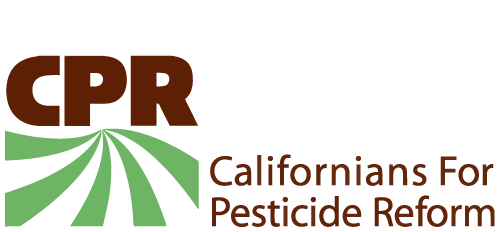Claims that rate is “low”
 By Californians for Pesticide Reform
By Californians for Pesticide Reform
Once again, the California Department of Pesticide Regulation (DPR) has released its annual study of pesticide residues on food (2017 data); once again it found illegal pesticide amounts on more than 4% of tested produce; and once again, DPR says that is a “low” figure. The headline of this year’s press release, “Tests Show Low or No Pesticide Levels in Most Fruits and Vegetables in California” is exactly the same as last year’s, as well as the 4% illegal sample rate.
DPR appears to assume Californians will not do the math: 4% is 1 in 25. If we eat our 5-A-Day recommended daily allowance of fruits and vegetables, we’ll have 25 helpings of produce in just 5 days.
“DPR’s study indicates that on average, Californians can expect to eat a piece of poison on our plates once a week, due to pesticide residues. That’s an unacceptable gamble, if you’re eating non-organic produce,” said Mark Weller, Co-Director of Californians for Pesticide Reform. Organic produce tested at 1% illegal pesticide levels with a much smaller sample size (288 of the 3,695 samples were organic produce).
Brain-harming chlorpyrifos residues were detected on 2.4% (88 of 3695) of all the samples and was the pesticide with the second highest number of illegal samples (12). Had the Trump Administration followed the US EPA scientists’ recommendation to effectively ban chlorpyrifos in 2016, all of the chlorpyrifos residues would have been considered illegal.
In total, 59% of tested fruit & vegetables had detectable pesticide residues.
Of the 30 illegal samples from California sources, 14 came from Ventura or Santa Barbara Counties.
Californians for Pesticide Reform is a diverse, statewide coalition of 200 member groups working to strengthen pesticide policies in California to protect public health and the environment. Member groups include public and children’s health advocates, clean air and water groups, health practitioners, environmental justice groups, labor, education, farmers and sustainable agriculture advocates from across the state.
